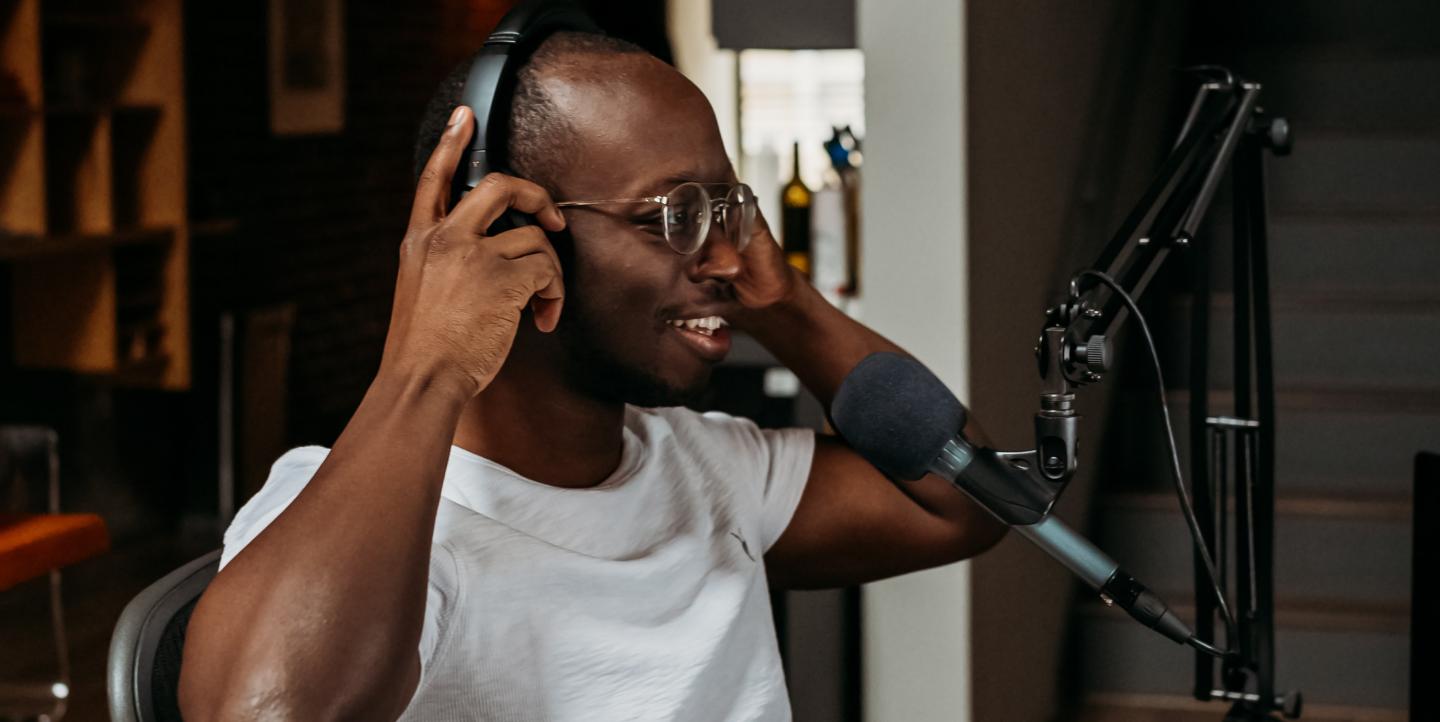The idea came on a whim. “Let’s create a podcast,” I told my former Al-Jazeera colleague Zyad Tariq Rasheed.
“Yes, let’s do it,” he told me without giving it a second thought.
And that was that. This was how we created our podcast ExpaTalk.
When I describe how I co-created my first podcast to my friends, I say I jumped in the ocean without learning how to swim. I had no clue what to do and where to begin.
First, we agreed on the concept: We would interview entrepreneurs, artists and luminaries from the Middle East, to inspire others and combat the mainstream narrative of Arabs and Middle Easterners that often portrays them as violent, poor and angry.
We agreed on a live video podcast format and called it ExpaTalk, سوالف مهجر in Arabic. Since both of us are of Arab origin and live in the diaspora, we thought this name would encompass the theme and spirit of our podcast.
When we first started, we divided the tasks. Zyad, an experienced broadcaster, took charge of the video portion and managed his task seamlessly using the Streamyard platform. I was responsible for the audio portion. I would turn the audio file from the live video interview into a podcast. I stumbled, making a lot of mistakes while trying to navigate the world of podcasting without prior knowledge.
Eventually, we made it. As I type this, we have over 400 downloads in a few months. This might sound like a modest number, but in a crowded field this is notable, and we are proud of what we have accomplished so far in such a short period of time.
Here’s what I have learned from my bumpy start, and the eventual smooth sailing:
[Read more: Tips for creating a podcast on a limited budget]
Get the right equipment
At first, I had no idea what to get and ended up with a Yeti microphone, which I highly recommend. I didn’t even think I needed a microphone at first and thought my computer microphone would suffice, but no. Trust me, you need it.
The second piece of equipment you need is headphones. I kept it simple and used my Apple AirPods Pro. Don’t skip this step. Once during the live recording, I forgot to wear my headphones, and the quality of the audio was subpar, so Zyad and I spent extra time trying to manipulate the audio to improve it. No more! I learned my lesson.
Invest in a podcast hosting platform
Starting out, I battled with the first episode’s RSS feed and tried to push the podcast manually to every single podcast player out there. Suffice to say, it was grueling. I failed and wasted a lot of time. Platforms like Buzzsprout, Anchor and Simplecast make it seamless to upload your podcast episodes on various platforms, and they offer some marketing features, too.
Teach yourself how to edit
Yes, audio editing comes in handy when you have a podcast. You will need to learn how to get rid of awkward pauses and add audio elements such as music and an introduction. I took an online course with communications master Seth Godin, and learned how to edit using Audacity, a free open-source audio software. The editing skills I learned were worth every dollar I spent.
Prepare a pitch letter
When reaching out to potential interview subjects, make sure to prepare an engaging pitch letter that explains the reason behind your podcast, gives some background info on the presenters and provides links to previous episodes. Make sure the letter includes why you think they would make a good guest.
You will be using this letter over and over again, so make sure it’s precise, polished, and updated as needed with the latest analytics, success stories and testimonials.
[Read more: Mistakes to avoid when creating a podcast]
Create a social media checklist
Social media remains the lifeline of our marketing efforts. There is a lot to do on various platforms, from Instagram Stories, to Facebook Live and LinkedIn posts. It’s overwhelming.
My advice is to create a checklist of what you need to do to promote the podcast before and after each episode airs. Make sure to prepare social media messages in advance, and share them with your guests before and after the interview so they can also help you with your marketing efforts.
Don’t forget about WhatsApp in your social media checklist. We have been getting a lot of traction using WhatsApp’s “broadcast list” feature through which we alert our contacts right before a live episode starts airing.
Seeking advice from an expert, I talked to Ramsey Tesdell, the co-founder and executive director of Sowt, a podcasting platform which produces high-quality audio programs in Arabic, and asked him what tips he would give to aspiring podcasters.
Here is what he told me:
- Content is still king, so the better the content, the better you’ll do no matter what format you choose.
- Promoting and marketing is important, but so too is being strategic and utilizing the most effective storytelling methods.
- Quality is important. Sound quality, mics and video are important aspects — but still, they won’t cover bad content.
- Listen to others producing content and have a feel for what ideas may be trending.
- Identify your audience and target them with laser-like precision.
Podcasting is still a small but growing arena in the MENA region, he added. “There are more commercial podcasts, and more political and news content. The Kingdom of Saudi Arabia is a big market, so I think there are opportunities there,” Tesdell said.
Creating my podcast has been one of the most fulfilling projects I have done this year. Go start yours, and don’t make the mistake I made of jumping in the ocean without learning how to swim first. There are a lot of resources out there to help you.
Happy podcasting!
Photo by ConvertKit on Unsplash.


